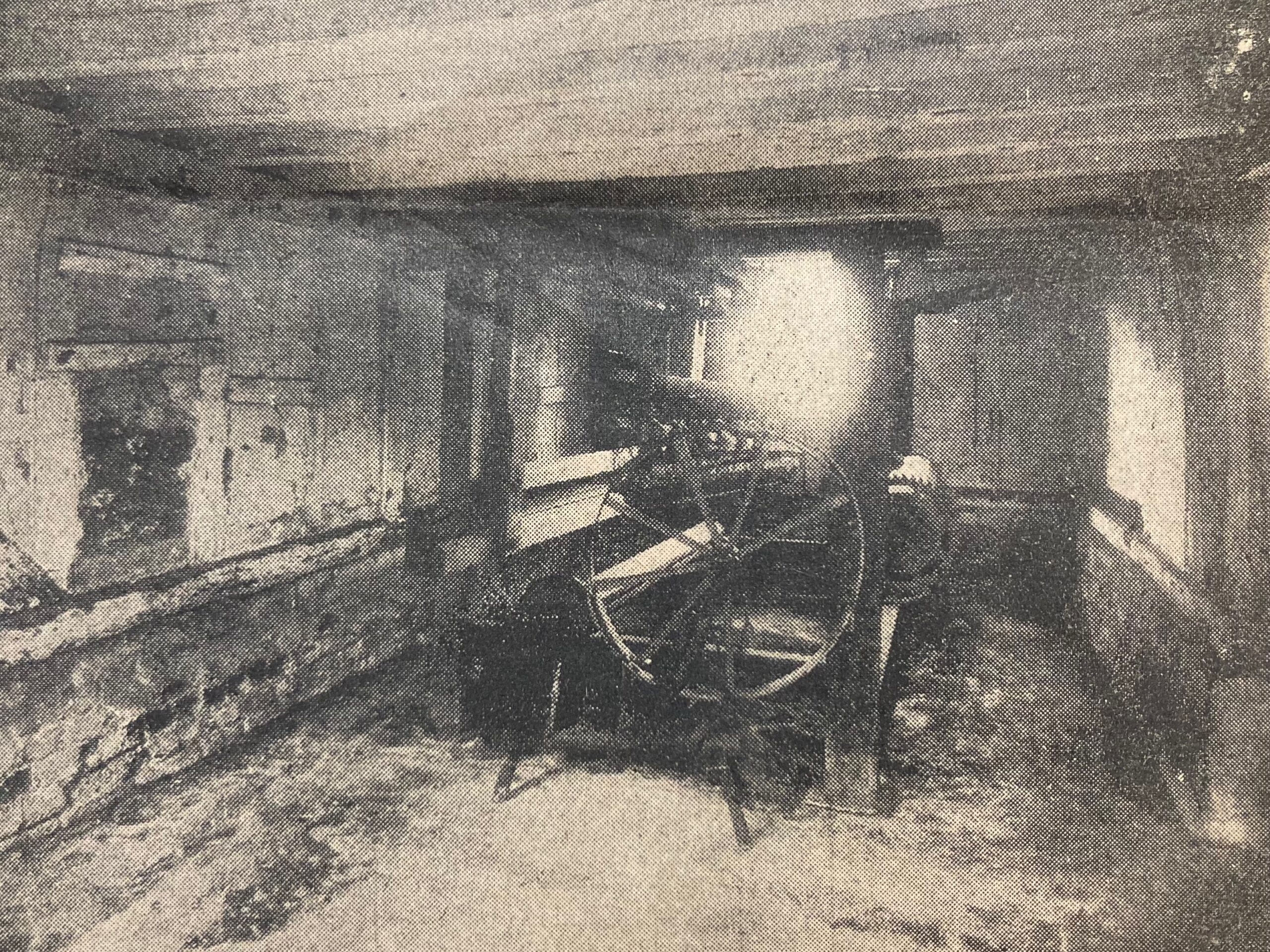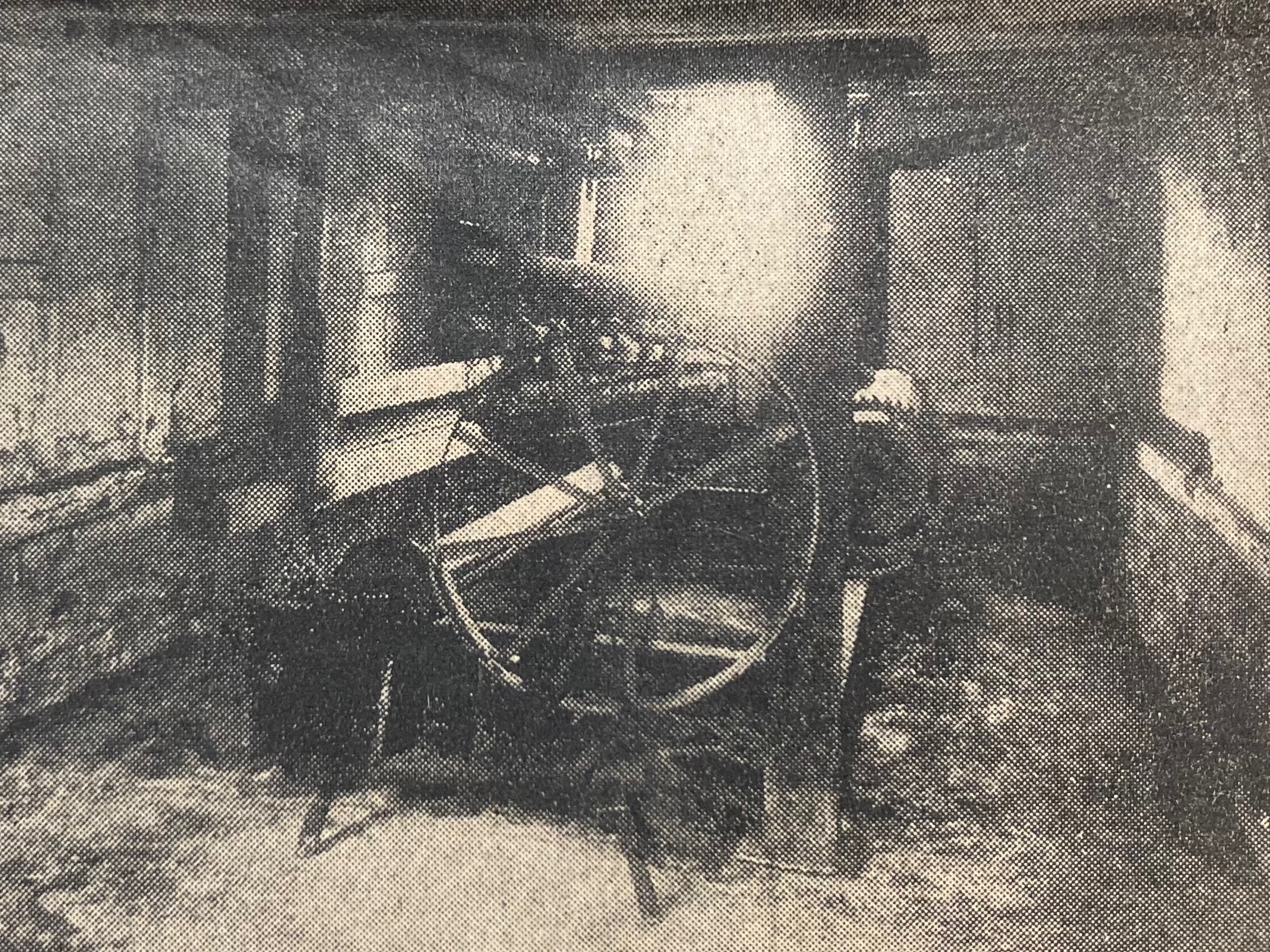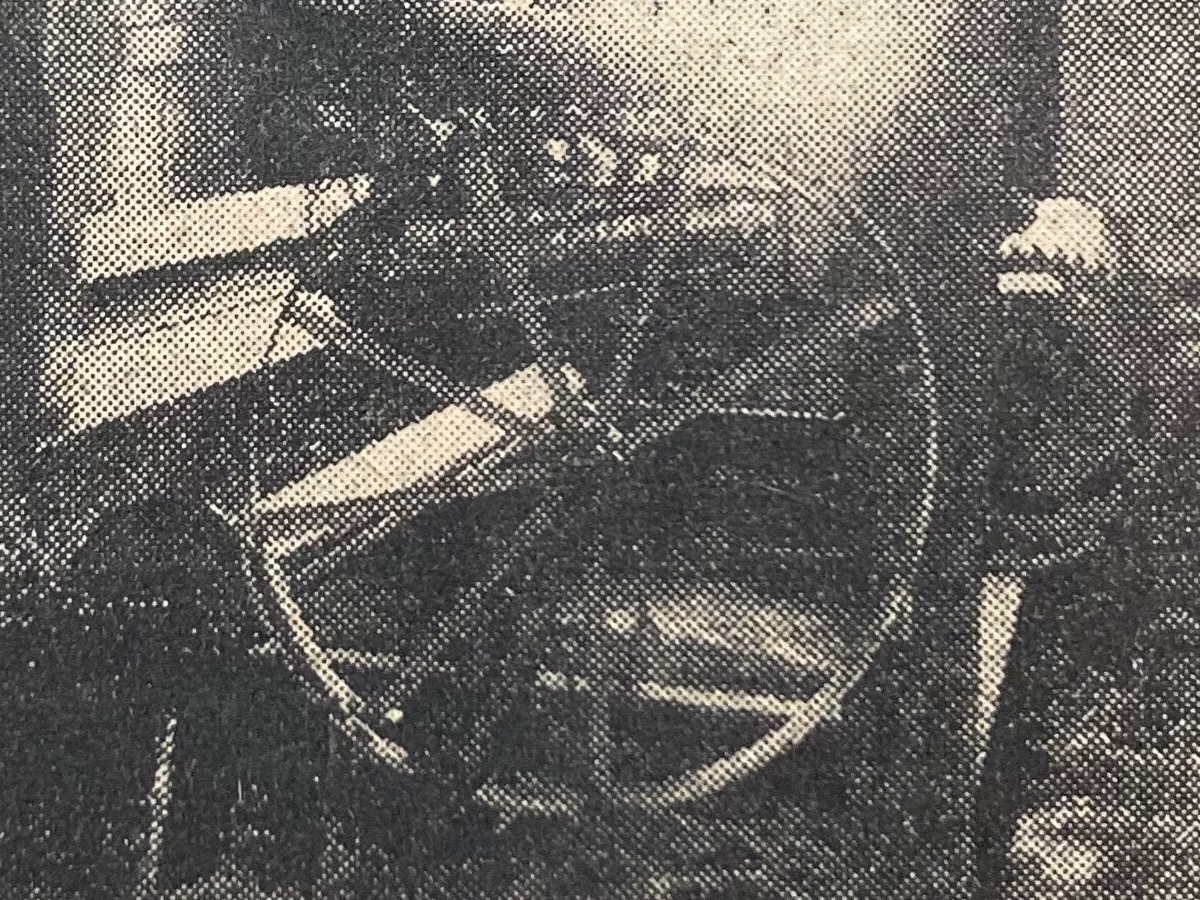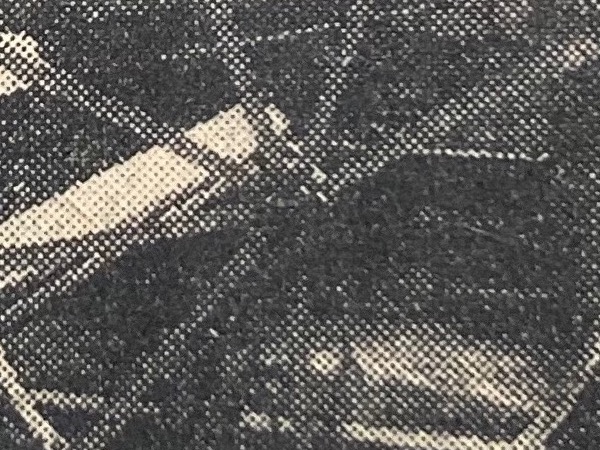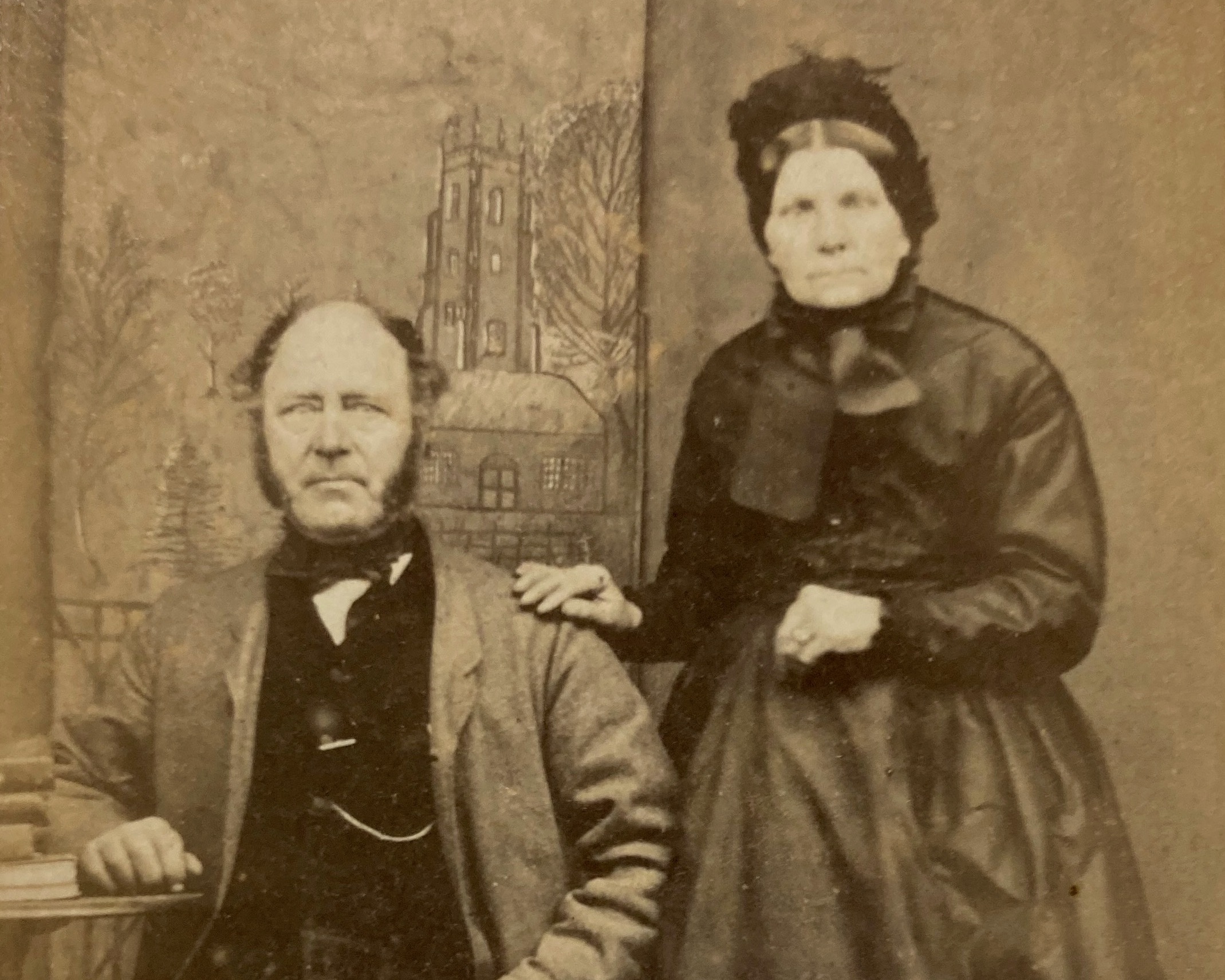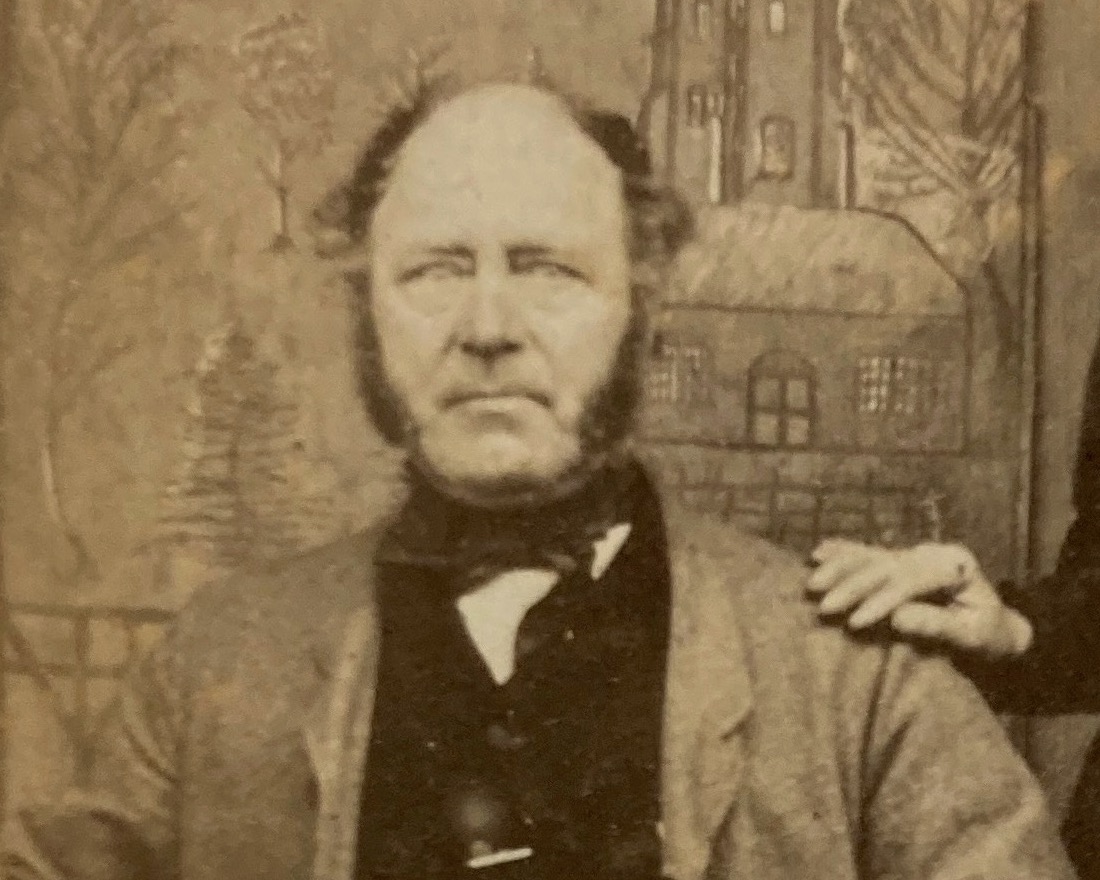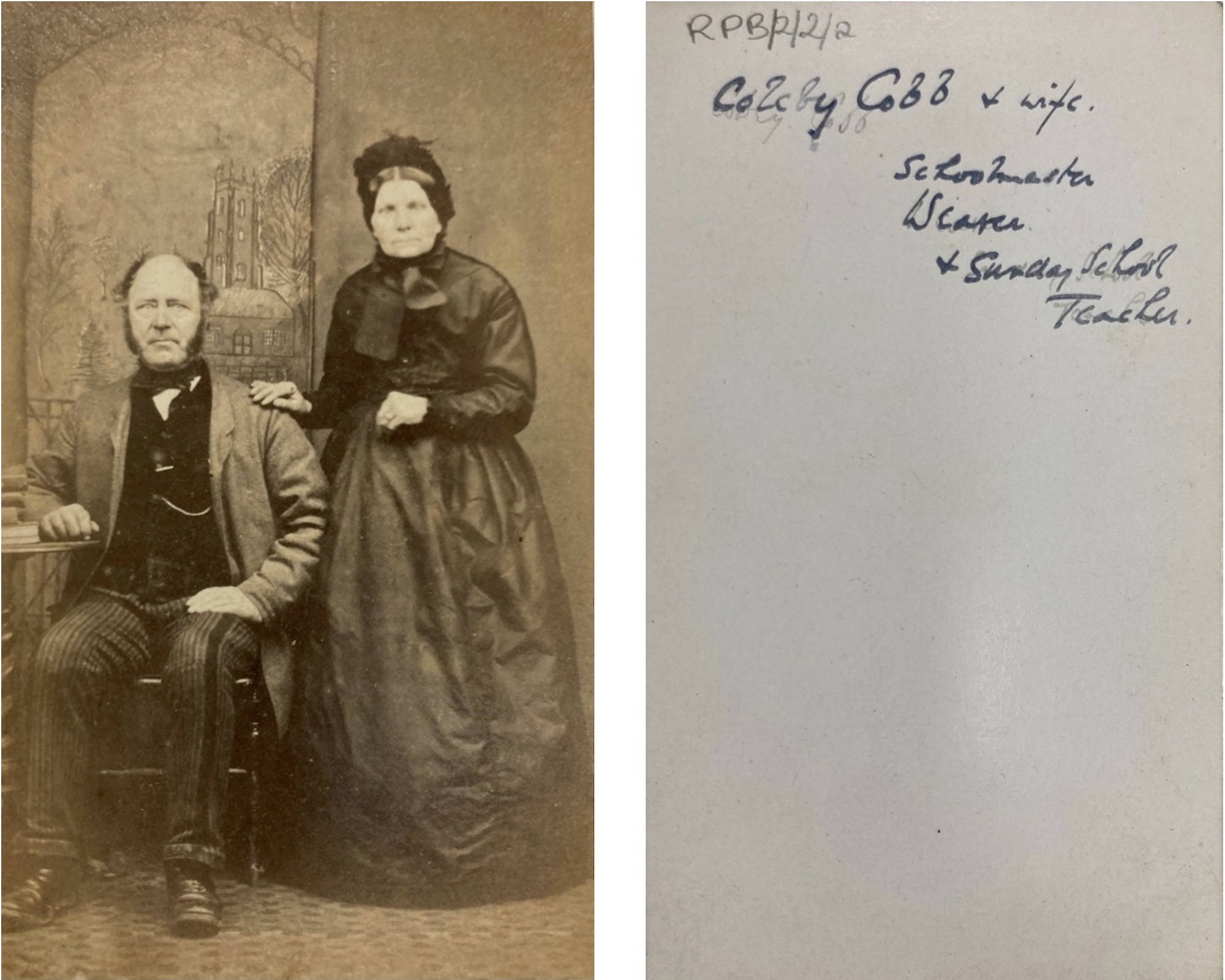“In a low, dark shed, green with damp and crumbling with age, there still stands the very last of the old Lopham looms…”
.
.
“In a low, dark shed, green with damp and crumbling with age, there still stands the very last of the old Lopham looms, exactly where it was worked for at least a century and a half. Though not so interesting a specimen as the fine example in the Norwich Bridewell, the loom still standing dusty and desolate is probably much older, and is not without its story. We know but part of it, and that is linked chiefly in memory with one, Coleby Cobb, who sat at it well over forty years, and was still a weaver at 70.”
These lines, and the photograph above, are taken from an article by Percy Beales that appeared in The Journal 1 on Saturday 29th March 1929. A cutting of the newspaper article is preserved in the Rita & Percy Beales archive in the Crafts Study Centre in Farnham.
The halftone photograph makes a tantalising image. The closer you look, the less you see, as the details disappear amongst the printed dots. It is likely that the original photograph was taken by Percy Beales himself, but the original is not in the archive. He described the loom as “of the primitive type for plain, full-width sheeting.” It has some features in common with other Lopham looms, including the four-post open-sided construction, forked swords and an iron or brass ratchet wheel on the yarn beam. In front of it you can make out the big wheel of a bobbin-winder for winding weft onto quills or pirns.
I have been trying to track down the old Lopham looms, some of which were sold at auction when the linen industry of North Lopham ceased with the closure of T.W. & J. Buckenham’s in 1925. The only one I have so far located belongs to Bankfield Museum in Halifax. Coleby Cobb’s loom, however, was evidently still in North Lopham a few years later when Percy Beales wrote his article in 1929. What happened to it after that?
When Michael Friend Serpell wrote A History of the Lophams in the late 1970’s he believed this loom was in Thetford Museum. 2 I assume he was referring to Thetford’s ‘Ancient House Museum’, although there is no trace of the old loom there now. Ancient House is now part of Norfolk Museums, whose curators believe a loom from Ancient House was moved into storage at Gressenhall Museum & Workhouse in the 1990’s. Whether this is the same loom or another is unclear. The stores are currently inaccessible, but I hope to be able to visit later this year once some reorganisation has been completed.
.
This is a photograph of Coleby Cobb, linen weaver of North Lopham, with his wife. On the reverse of the photograph (also in the Crafts Study Centre) is an inscription in Percy Beale’s hand: “Coleby Cobb + wife. Schoolmaster Weaver + Sunday School Teacher”.
Not much is recorded about Cobb. He had been a linen manufacturer in North Lopham by the 1820’s and had died before 1851. 3 According to Percy Beales he worked for the Buckenhams and was one of “the finest hand-weavers Lopham – that is to say England – ever knew”. 4 He was one of the weavers who met with John Mitchell, Commisioner for the Parliamentary Report on the Condition of the Handloom Weavers, one day in 1839 in the ‘Bell’ public house in North Lopham. 5
Notes
- “The Journal” was perhaps a supplement to the Eastern Daily Press? The title of the article is Coleby Cobb’s Loom: a Lopham Survival of the Days of the Old Weaving Industry: Stories of a Village Hampden.
- Michael Friend Serpell (1980): A History of the Lophams. p. 149.
- ibid. p. 139.
- From newspaper cutting in the Crafts Study Centre ref. RBP 2/1/3: “Coleby Cobb wove for the Buckenhams, and it must be remembered that almost every cottager in those days wove as a part-timer when not engaged in his ordinary occupation, eventually in many cases giving up the latter.”
- See my blog From Lopham With Love
d
